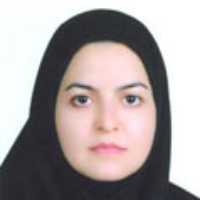Dispersion and distribution of trace and ore elements in the polymetalic vein- type Chah-Mesi ore deposit, north of Shahre-Babak
The Chah-Mesi polymetallic vein-type ore deposit, located 40 km north of Shahre-Babak city and 1.5 km southwest of Miduk porphyry copper deposit, is situated in the Dehaj-Sarduieh belt as a part of the Urumieh–Dokhtar magmatic Arc (UDMA) (Figure 1).
The main objectives of this research study are to investigate: (1) characterization of multi-element distribution associated with Cu mineralization, in order to demonstrate prediction of elemental concentration applied to identify high-grade ore bodies, (2) evaluating the interrelationships between copper, molybdenum, iron, led, zinc, gold and silver.
Petrography and mineralography of the Chah-Mesi ore deposit were carried out using thin and polished sections. More than 980 chemical analyses of samples collected from 35 boreholes of the National Iranian Copper Industry Company (NICICO) were implemented to evaluate the statistical as well as spatial distribution and dispersion of multi-element halos. Geochemical data processing was performed by applying Excel (2010), SPSS (19), Datamine (Studio3.22.84.0) and Surfer10 (2011) software packages.
The Chah-Mesi ore deposit consists of four main and some minor polymetalic (Cu-Pb-Zn-Ag) quartz-sulfide veins, with NE-SW and N-S trending and 65-80 degree dipping, which intersected the Eocene volcanic and pyroclastic sequences (Figure 2). It seems that mineralization has mainly occurred along these quartz-sulfide veins overlaid by Quaternary alluvium. Based on rock outcrops, the prominent mineralization has been controlled by structural features including faults and fractures that provided proper conditions for reaction of hydrothermal fluids with the host rocks.In the Chah-Mesi ore deposit, silicified veins containing poly-metallic mineralization have predominantly occurred along the main faults and shear zones. The intensity of argillic alteration dramatically decreases outward from the mineralized quartz veins (Figure 3). Propylitic alteration which is composed of calcite and chlorite minerals has extended in the peripheral zones and does not represent a clear relationship with Cu mineralization.The main host rocks in the Chah-Mesi ore deposit consist of basalt to basaltic andesite, with porphyry to glomeroporphyry textures, and to a lesser extent of pyroclastic rocks (Figure 4). The ore bodies are mainly composed of pyrite, chalcopyrite, sphalerite and galena. The ore minerals are accompanied with chalcocite, malachite, covellite, azurite and iron hydroxides that have been formed during supergene and weathering processes (Figure 5). According to field surveys, structural controls have played an important role in the mineralization of the Chah-Mesi ore deposit.
Geochemical investigation in the Chah-Mesi ore deposit, using Pearson correlation coefficient of trace elements (Table 1), indicated the highest correlation coefficient (more than 0.7) between Pb-Zn and Ag-Au elements, due to their similar geochemical affinities during epigenetic mineralization. Other significant correlations were observed between Cu-Ag, Cu-Fe, Cu-Au and Fe-Ag with a correlation coefficient of more than 0.6; while the Mo shows weak correlation with other elements. Based on cluster analysis, the trace elements that are associated with mineralization can be classified into four main clusters of Pb-Zn, Mo, Cu-Fe-Ag and Au (Figure 6). Noteworthy, despite the fact that Mo and Au each separately form their individual clusters, Au still shows some proximities with the Cu-Fe-Ag cluster that indicate their genetic relationship. However, Mo displays the most dissimilarity with other clusters, which indicates the role of different processes in its distribution. The results of this analysis are well in line with correlation coefficients.The geochemical vertical zonality of trace elements in the Chah-Mesi ore deposit were studied using four borehole data from different parts of the ore deposit (Figures 7 and 8). This demonstrated that variation of elements at different depths does not follow a uniform pattern due to differences in the type and amount of ore minerals in the veins.The veins containing lead, zinc and gold mineralization are highly abundant at the shallower levels based on geochemical maps of the Chah-Mesi ore deposit (Figure 9). In contrast, the veins containing copper and silver mineralization have been considerably developed in both shallow and deeper levels. The high degree of Mo at shallow levels seems to occur due to either superimposition of primary geochemical haloes of various veins (Li et al., 1995, 2016) and/or the effect of amount of pyrite, pH, and alkalinity contents of hydrothermal fluids (Leanderson et al., 1987).The average value of different elements in intervals of 50 meters from the shallow (2500 meters) to the deep (2300 meters) levels are determined by existence of maximum abundance of lead, zinc and gold elements at surface levels. However, the highest average abundance of copper occurs in the deepest level. The highest average value of silver is also located in the 2450, 2350, and 2500 meters levels, which is economically valuable (Table 2). Therefore, the continuation of drilling in the southern part of the Chah-Mesi ore deposit into deeper levels is strongly recommended as there may still exist more concentrations of copper and silver there.
- حق عضویت دریافتی صرف حمایت از نشریات عضو و نگهداری، تکمیل و توسعه مگیران میشود.
- پرداخت حق اشتراک و دانلود مقالات اجازه بازنشر آن در سایر رسانههای چاپی و دیجیتال را به کاربر نمیدهد.



